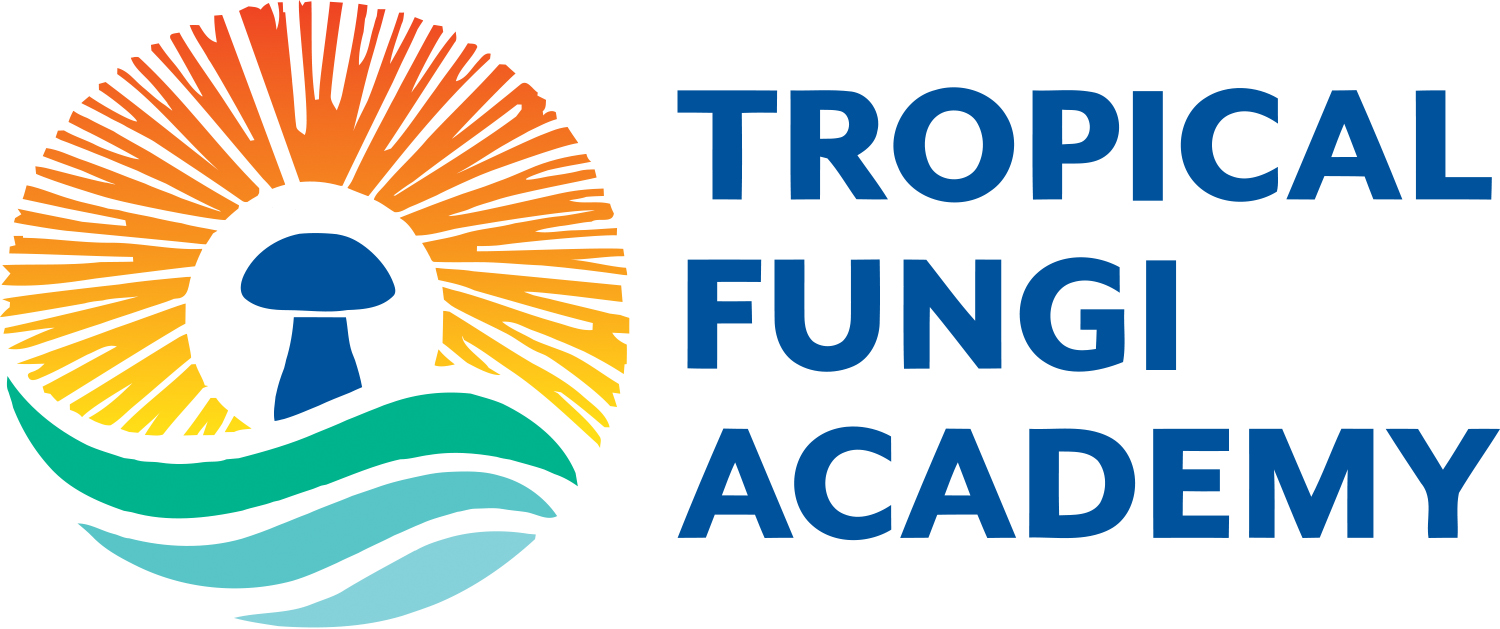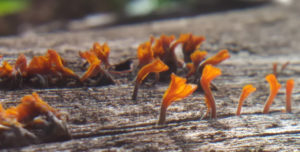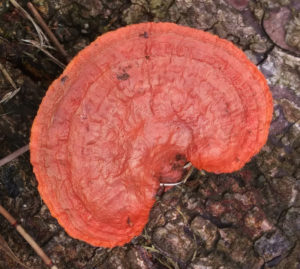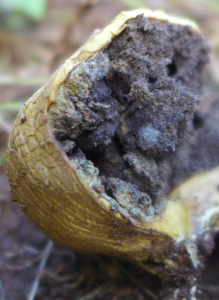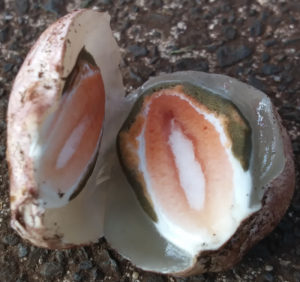Properly identifying mushrooms takes a few steps. Oftentimes it is difficult – if not impossible – to identify a mushroom just by looking at its top surface alone.
It is critical to also look underneath the mushroom to see what kind of fertile surface type it has. Different species of fungi can sometimes look very similar from above, but actually have vastly different kinds of fertile surfaces below. For example, with the classic cap-and-stem mushroom the fertile surface is located on the bottom side of the cap. There you will see the fertile surface on which the mushrooms spore’s (like plant seeds) are formed.
There are 3 different shapes of fertile surface types that you will most often find under the cap:
- Gills look like pages in a book.
- Pores look like a bunch of small – sometimes very tiny – holes.
- Teeth look like elongated, cone-shaped spines.
[…and some mushrooms have veins underneath.]

Sometimes when identifying, we only want to know what type of fertile surface a mushroom has. To do this we actually do not need to pick it from the earth – or maybe the the mushroom doesn’t want to be picked! Perhaps it is still too young & we want it to complete its lifecycle by maturing & releasing its spores yet we still want to know what kind of mushroom it is. In this case, we can use a dental mirror to see what kind of fertile surface the mushroom has to help us with identification.
It’s easy. What we do is simply hold the dental mirror against the ground underneath the mushroom’s cap, & then angle the mirror towards our eyes so that we can see if the mushroom has gills, pores, or teeth. This step can either get us closer to identifying a mushroom to species or can sometimes even give us a definitive answer as to what the mushroom is.
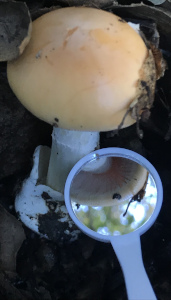
Photo by Jason Youth | CC0 public domain | iNaturalist
Always be sure to see what kind of fertile surface the mushroom has. And if getting help from others by sending them your photographs of the mushroom, be sure to always include a photo of the fertile surface in addition to the top surface.
If you want to learn more about mushroom ID, then please join us for our next mushroom identification class by clicking here.
